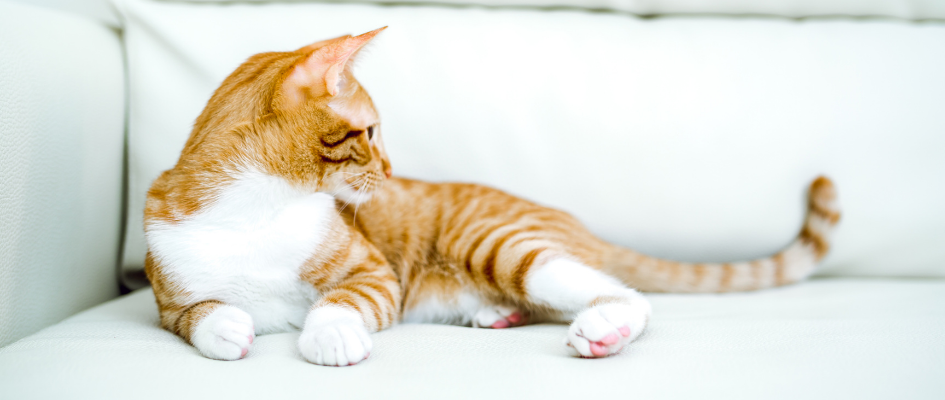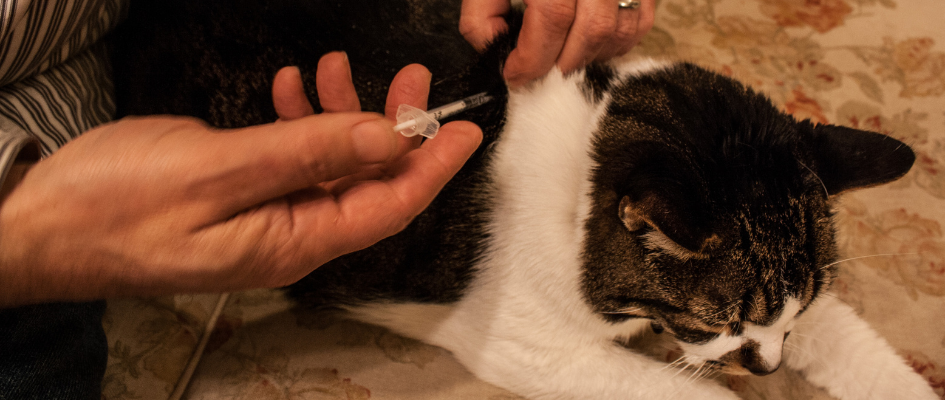Taking your cat to the vets can be a stressful experience for both you and your pet, but for some cats even just visiting us for a routine appointment can be an ordeal. If your cat is also ill or painful then it can be additionally stressful for them, but there are steps you can take to make it easier for them to cope. With a bit of planning ahead, a visit to our vets can be a much less traumatic experience for your cat.
Preparing for a vet visit
Cats like routine and can easily become stressed in new situations, especially if they have previously had a negative experience. However, there are things you can do to prepare your cat for a visit to our practice that will give them a more positive experience and reduce any future stress:
Familiarising your cat with their carrier
A pet carrier is essential for safely transporting your cat and should always be used when bringing your cat to us. However, if the only time your cat sees their carrier is when they are going somewhere stressful, then they will quickly learn to associate the carrier with negative experiences. It can then start to be difficult to get them to go inside.
To reduce any negative association that your cat may have with their carrier, you need to use the carrier as part of their daily routine, so they will become familiar with it. This means that the carrier needs to become part of your cat’s normal furniture. You may need to feed your cat inside the carrier, or let them use the carrier to sleep in, allowing them to become comfortable using it on a daily basis. It can take time to adjust to the carrier being part of everyday life but eventually they will become more comfortable using it, resulting in them being calmer when they need to use the carrier for travelling.
What to put in the carrier?
To make the carrier more appealing and familiar for your cat, there are items you can add to it. By lining the carrier with your cat’s favourite blanket or item of bedding, you can ensure that they have a familiar scent inside the carrier. Some cats are also comforted by their owner’s scent, so you could add an item of your clothing to give your cat extra reassurance. If your cat is being hospitalised with us then you can also bring along one of your cat’s blankets that we can add to their bed to make their stay more comfortable.
Feliway
Cats can communicate using pheromones which are released when your cat is happy and content. Feliway is a synthetic pheromone that mimics the happy and content signal a cat will produce. This means it can be a useful product to use that will help settle your cat and keep them relaxed in a variety of situations. Before using the carrier it can be useful to spray the carrier and any bedding or covers with Feliway, 15 minutes before you need it. This can help keep your cat calm while in the carrier, during the journey, and while at our vets. You can also repeat the use of Feliway in the carrier if you are picking your cat up from us after a hospital stay. Using it in your home once you get back from your visit, to help your cat settle after their journey, can also be helpful. One of our team would be happy to discuss with you the use of Feliway and how it may be helpful for your cat.
Travelling to the vets
Now that your cat is familiar with their carrier and is ready for their visit to see us, it is time to think about how you can make your cat’s journey to the vets as stress free as possible. Cars are scary for a cat, with the noise and motion being upsetting for many individuals, but there are ways you can make the journey more comfortable for them.
Car journeys
Once your cat is inside the carrier, you should try to make them feel as secure as you can. Cats can become stressed by travelling and unfamiliar environments, so you can reduce this stress by covering the carrier up with a blanket or towel. Once in the car, the carrier should be secured so that it does not move around. Using a seat belt is a good way of keeping the carrier safe in your car. Cats also prefer the carrier to be kept level, so using extra towels to keep the carrier in a suitable position will also help keep your cat relaxed. If it is a hot day then make sure that the car is at a comfortable temperature for your pet. Be careful that they are not left inside the car by themselves for any length of time, as the car can heat up to dangerous levels very quickly. Remember to keep your cat secure inside the carrier throughout the journey and not to let them out inside the car. A scared cat may try and escape which can be dangerous for them in an unfamiliar environment.
At the vets…
The waiting room
The waiting room can be a very stressful place for your cat with all the different scents present and other pets that may be there. It is important to remember that meeting a dog will be very unsettling for your cat, so you should try to avoid any encounters with dogs if you can, particularly if your cat is nervous. Once in our waiting room try to sit separately from any dogs, and let one of our team know if this is not possible so we can help you.
Continue to keep the carrier covered over so that your cat still feels secure. Cats usually feel safer at a higher level so avoid placing the carrier on the floor and instead use one of the chairs to put the carrier on, to keep your cat more comfortable. For your cat’s safety keep them inside the carrier at all times while in the waiting room, where they will feel secure.
The consulting room
Once inside the consulting room, if the doors are secure, then it can be useful to let your cat out to explore, allowing them to adjust to their new surroundings. By giving your cat time to walk around the floor is a good way to let them settle. If your cat is visiting us for a procedure, such as a nail clip or blood test, then our vet may ask a nurse to help hold your cat to make the procedure as safe and comfortable for your cat as possible. If your cat is particularly nervous then one of our vets would be happy to give you advice on how to keep them calm.
We understand that visiting our vets can be scary and stressful for your cat, so we try to make the experience as comfortable and stress-free as possible. If you have any questions about how you can help keep your cat calm and settled during their visit, then one of our team will be happy to help you.


